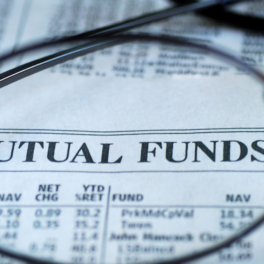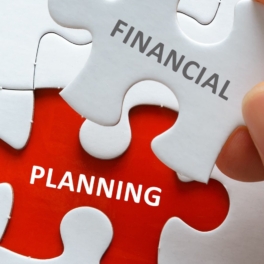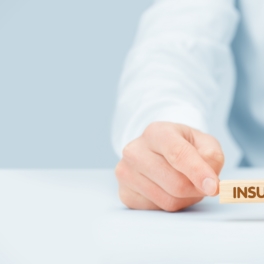

The Bizarre World of Higher Interest Rates
In March of 2022, the Federal Reserve began increasing its federal funds rate to combat the highest inflation the U.S. had seen in more than 40 years. Many of us have felt inflation in our daily lives, whether it be groceries, fuel, clothes, etc. While there are signs that inflation is slowing, increased interest rates still remain, signaling a departure from the financial dynamics we have seen over the past 10-15 years. Here’s a look at the pros and cons of rising interest rates, and how you can take advantage of a rising rate environment.
PROS
Cash: Cash is defined as money that will be available either immediately or at least within a couple of days without material risk of a loss of value – i.e., money held in checking, savings, or money market accounts. Interest rates on cash investments have been extremely unattractive for the past 10-15 years, but with interest rates increasing, your cash can now be more productive. While checking and savings account rates at banks are still in most cases low, some banks are paying higher rates on deposits now, and there are money market funds available that are yielding in the neighborhood of 5-6% through banks, brokerage firms, and/or fund companies such as Charles Schwab, Fidelity, Vanguard (and others). So, if you have cash and are in a position to save it, placing it in a high yield savings account or money market fund can be far more attractive than it has been, at least in the last 10-15 years.
Short-term bonds and CDs: For money that is still short-term, but which can be locked up for a longer time, rates have similarly improved. Rates on 3-12 month CDs and rates on U.S. Treasury bond, bills, and notes can be found in the 4%-5.5% range.
Bonds in Intermediate-Term Investment Portfolios: For the “capital preservation” portion of investment portfolios, usually consisting of primarily short- and intermediate-term bonds that lock in rates for 2-10 years, rates have also been very low until recently, causing the return on the bond portion of traditional stock and bond investment portfolios to be really low. That has changed dramatically now, with Treasury and high-quality corporate bond rates ranging from 4%-6%. This means that the capital preservation portfolio of intermediate-term investment portfolios can be expected to generate much better returns for the foreseeable future than was the case until recently.
CONS
Home Equity Lines of Credit (HELOCs): Opening a HELOC for a bathroom remodel, backyard upgrade, or to help pay for a nicety was exciting when you were only paying 2-4%. With interest rates increasing, HELOC rates can now be anywhere from 7%-10%. At those rates, borrowing is far less attractive. If you are in a position to either pay cash or wait for the upgrade/enhancement until rates potentially come down, then you may want to do so.
Car Loans: Financing a vehicle is much like using a HELOC when interest rates are high. It is generally much more expensive now than it has been. Cars have also seen significant price increases in the recent few years. If you can wait to accumulate cash to pay for the purchase, it will likely work out more favorably in the future.
SOMEWHERE IN BETWEEN
Home Purchases: Buying a home is one of the most expensive acquisitions most people ever make. In the bizarre world of high interest rates, buying a home just got a whole lot more expensive. While borrowing rates were at all time lows a few years ago, that is simply not reality anymore. Mortgage rates are now in the 6-8% realm, which has been hard to stomach for prospective buyers. If you were considering buying a home a few years ago, you could get significantly more mortgage for the same payment than you can now. For example, a $500,000, 30 year mortgage at a 3% interest rate would have a basic payment of $2,108 per month. The same loan with a rate of 7% would have a payment of $3,327 per month. That said, a home purchase can still make sense right now if you can swing the payments. There can be a lot of financial and personal benefits to owning your home, and you also always have the option to refinance at some point in the future if mortgage rates do come back down a bit. However, we caution that it is probably not likely they will drop to the lows we saw in the past few years anytime soon, if ever.
Ironically, even though the world of interest rates seems to have turned on its head, the general rules of finance remain intact. To sum it up simply: saving is good, unnecessary borrowing is bad. The low rates we saw were a bit unnatural, the result of governments trying to bolster economies coming out of the financial crisis of 2007-2009, and more recently the pandemic. The unnatural situation of such low rates created less of an incentive to pay attention to these general rules of finance. Having rates at a more natural, higher level, reinforces the value of these general rules, as there is now additional incentive to save, and a stronger disincentive to borrow.
If you are grappling with any of these issues, or have more questions about the interest rate environment, we welcome the conversation.
The information provided herein is for educational purposes only, and should not be construed as advice, including, but not limited to tax, legal, insurance, investment, or retirement advice. For your specific planning needs, please seek the advice of Integris Wealth Management, your tax accountant, attorney, insurance agent, or other professional as appropriate. Investing involves the risk of loss.




